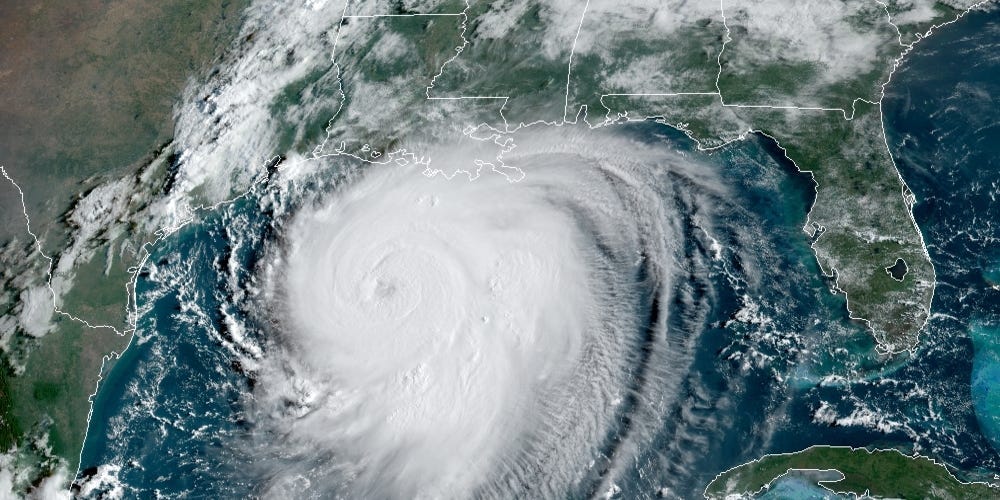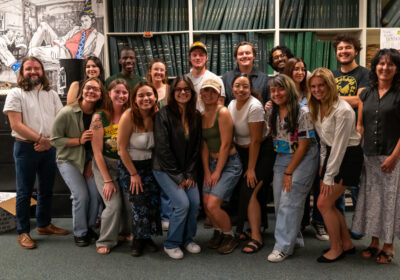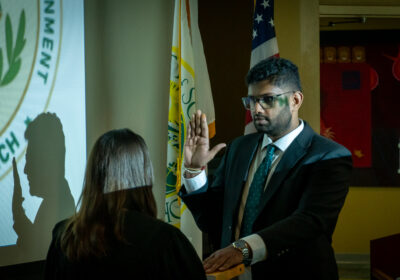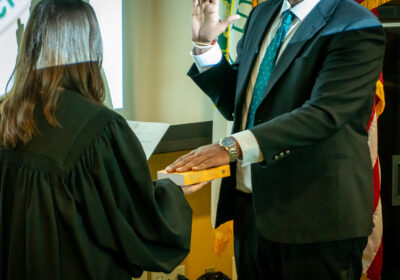USF prepares for storm surge, rainfall as predictions indicate a busy hurricane season

The National Oceanic and Atmospheric Administration (NOAA) predicted this upcoming hurricane season will be above normal in terms of Atlantic activity, and USF experts are preparing ways to keep the community and student body safe.
Due to Florida’s low elevation above sea level and status as a peninsula, it’s always a particularly vulnerable target during hurricane season, and the risk is further pronounced because of climate change and gradual sea level rise.
The NOAA website predicted about 13-20 named storms for this hurricane season, beginning June 1 and ending Nov. 30, and six to 10 out of those would become hurricanes. Three to five of these hurricanes are expected to be major hurricanes above Category 3 with a rate of 70% confidence. On average, a year has 12 named storms, six hurricanes and three major hurricanes. Last year broke records with 30 named storms, according to the NOAA.
Guy Van Asten, a safety and compliance officer at the USF St. Pete campus and an emergency management coordinator, is responsible for coordinating mitigation response and recovery to hazards that happen on campus during hurricanes.
The St. Pete and Sarasota-Manatee campuses are at a greater risk for storm surges because of their close proximity to bodies of water, but Van Asten said he and his colleagues are working to prepare their assets and back-up power sources prior to any hurricanes.
“We move boats and other belongings to higher ground, move the animals out of the laboratories and shift our classes online,” said Van Asten. “We make sure the generators are fueled and ready for the upcoming storm.”
Objects like umbrellas and tables on campus will be secured properly to not be damaged or displaced by the high winds, and a joint partnership with the City of St. Petersburg will ensure cars are properly stored in parking garages.
If a serious storm were to occur, students at the St. Pete campus will then be evacuated to the Tampa campus or to their families’ homes, depending on the respective students’ greatest convenience.
Van Asten remains optimistic that the USF community is prepared for such an event, citing the pandemic as proof that if necessary, academia can be brought online without major disruption to the curriculum or school year until a major storm passes.
All three campuses participated in a hurricane exercise June 2 for emergency management faculty that President Steven Currall attended, making many participants, including Van Asten, feel they were ready for this season.
“I’ve worked at USF for 20 years,” said Van Asten. “This year was the first I’ve ever seen a USF president participate [in a hurricane exercise].”
The yearly hurricane exercise is a key component of national preparedness. The parameters of the exercise are dictated by the Homeland Security Exercise and Evaluation Program, which was created by the Federal Emergency Management Agency. The exercise allows them to practice each campus’s response to hurricanes in a non-threatening environment, simulating the procedures that each emergency response team would go through.
Mark Luther, associate professor at the USF College of Marine Science and director of USF’s Ocean Monitoring and Prediction Lab, reiterated that this upcoming hurricane season seems to be above average in terms of activity, but stressed that even during lesser seasons it’s best to be prepared ahead of time.
He recommended that each household or student have a first-aid kit, water, food supplies, a plan for shelter as well as a device with which they can stay informed about the storm.
“All it takes is one storm to hit where you live,” said Luther. “Then it becomes a really bad hurricane season for you, regardless of the overall damage elsewhere.”
Levees, anti-flooding structures typically found in rivers in other states such as Mississippi and Louisiana, are not an option in Florida to prevent flooding due to the state’s abundant water sources and porous lime rock bedding, according to Luther.
“If you put levees up, you can keep the storm surge from battering the shoreline structures,” said Luther. “However, once the water percolates up through that lime rock, you’re still going to get flooded.”
Due to the overall futility of taking measures to prevent flooding in Florida, Luther advised that those who live in coastal areas prone to flooding should evacuate as soon as possible once announcements for evacuations are made.
Climate change, particularly human-made from burning fossil fuels, according to Luther, is responsible for hurricanes becoming more intense and, potentially, frequent. The rising sea levels are also making storm surges more devastating.
“We know that the tides are higher than they were 30-40 years ago,” said Luther. “The storm surge piled on top of the already higher water levels is going to be more severe due to the higher baseline.”
Despite these numerous grim tidings, Luther said the university has made some progressive steps to help prepare for potential storm surges caused by hurricanes, being designated as a center of excellence for coastal flooding research by the state of Florida.
With this title comes greater funding for ocean mapping as well as a cooperative agreement with NOAA to operate ocean mapping innovative technology for five years.
“To really understand what’s happening with a storm surge, you have to understand the water depths all around the state of Florida,” said Luther. “We [now] have significant new resources and research into how to do [ocean mapping] better and more efficiently.”
These advancements in ocean mapping, according to Luther, will enable better preparation and mitigation of potential storm surges by monitoring the ocean levels around the state.
Gov. Ron DeSantis signed a $100 million bill in May to map the waters around the coast of Florida, which Luther views as another step in the right direction.
Some USF affiliates are looking to prepare not only students who may not have experienced a hurricane before but also vulnerable populations in the Tampa Bay area.
Elizabeth Dunn, an instructor at the College of Public Health and program director of the USF Community Emergency Response Team (CERT), works with other local emergency and medical organizations to ensure marginalized residents of Hillsborough County are fully prepared and supported in times of emergency.
“My personal interest is looking at how we can do a better job preparing these individuals for hurricane season,” said Dunn. “Especially those who live in at-risk areas in coastal areas and live in homes that aren’t built to code to withstand hurricane force winds.”
Her partners include the Hillsborough County and City of Tampa offices of emergency management and the Florida Department of Health, which help CERT plan an emergency response to disasters and emergencies, including hurricanes.
COVID-19 has had an impact in emergency management, according to Dunn, specifically in regard to local shelters that CERT oversees.
“We have been focused on how to properly set up our shelters to ensure that people are properly spaced out to minimize the risk of contracting COVID,” said Dunn. “We also think about what mitigation measures we can put in place to ensure those who are medically fragile or at a higher risk of complications are protected.”
CERT also works to promote community outreach within USF. It used to host disaster preparedness training at the Marshall Student Center and at Bull Market prior to the pandemic, as well as having numerous resources on its website for students to use to build their hurricane kits and plans.
Dunn also encouraged students to be prepared for this hurricane season, not just for their own peace of mind, but for their families, since hurricanes may cause inconveniences that can make it difficult to get in contact.
“If communication towers go down or you can’t access your cell phone, how are you going to let everybody know that you’re safe?” said Dunn. “Come up with a plan to notify or get in touch with your loved ones.”
Out-of-state or international students who may have never experienced a hurricane are encouraged to reach out to their friends who are locals and find out their hurricane plans, or see if they can stay with them until the storm passes. Dunn said it would be more ideal than students going to shelters to prevent crowding due to the presence of COVID-19.
As the season progresses, Dunn said preparing personal plans for safety and shelter will be beneficial to all students and community members as it grants them peace of mind for when storms are approaching.
“The more prepared you feel or are, the more it will help you from a mental health standpoint,” said Dunn. “When you’re being faced with an emergency situation, that stress and fear can make it harder to make the right decision and lead to adverse mental health impacts.”
Van Asten encouraged students who may be feeling overwhelmed or unsure how to prepare for an upcoming hurricane season to ask for help, as there are plenty of resources available.
“There are the emergency management, the police department and the counseling centers,” said Van Asten. “Whatever it might be, we have the resources to reach out and find the answer.”







